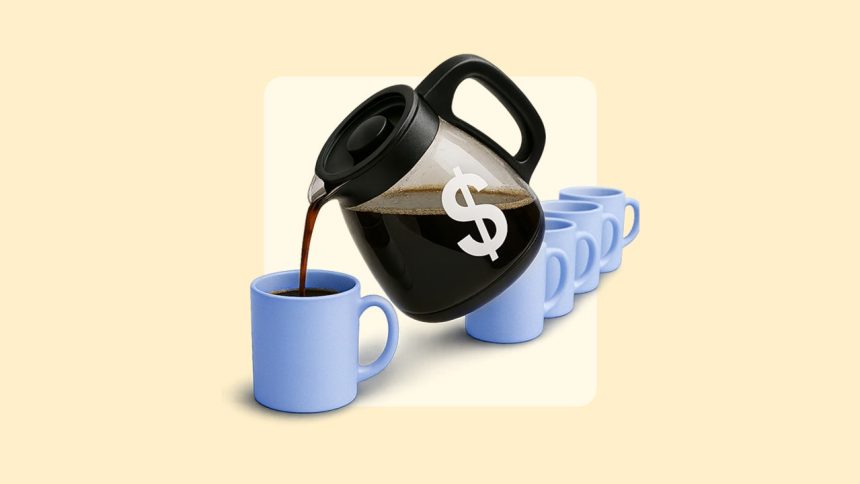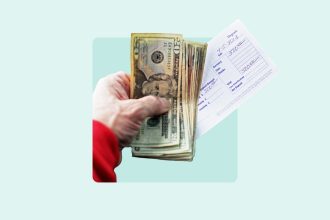The safe withdrawal rate (SWR) method is a spending strategy that allows retirees to draw down their portfolios during retirement while minimizing the risk of running out of money. While the method isn’t perfect, the safe withdrawal rate gives retirees a guideline for their spending.
Maintaining a portfolio based on the safe withdrawal rate can be a fine balance. Retirees and financial advisors often set up a portfolio with lower-risk assets such as bonds to help ensure that it lasts a lifetime using the SWR method. But retirees generally keep some growth assets, such as stocks, to maintain a modest return. By creating a lower-risk portfolio, retirees can ensure their income lasts, though they should continue to monitor their investments and spending.
What is the safe withdrawal rate method?
The safe withdrawal rate is the rate of withdrawal from retirement accounts that still allows retirees to use their investments while minimizing the risk of depleting them before the end of their lives. Because the goal is to make your investment portfolio fund your lifestyle as long as possible, the safe withdrawal rate is usually a small percentage of the portfolio.
After a lifetime of saving in tax-advantaged retirement accounts such as a 401(k) or a Roth IRA, retirees can use the SWR method when it’s time to live off those investments. While retirees may have a pension or Social Security, the SWR method typically doesn’t consider those sources of income and focuses instead on maximizing a retiree’s discretionary portfolio. Of course, if a retiree can live without touching this portfolio, that can extend the portfolio’s runway.
Although retirees usually reduce their portfolio’s risk compared to their earlier working years, they typically maintain a certain stock allocation, such as 40 percent or 50 percent. This allocation to stocks provides the portfolio some potential to grow over time. The remainder of assets are often parked in income-producing assets such as CDs or bonds. This combination can provide a relatively low-risk portfolio that can increase the retiree’s safe withdrawal rate.
A stable portfolio with some growth opportunities gives retirees a higher chance of avoiding the dreaded possibility of running out of money.
How to calculate the safe withdrawal rate
Calculating the safe withdrawal rate can be as simple as using the 4 percent rule, a classic rule of thumb for financial planners. The 4 percent rule refers to withdrawing 4 percent of your portfolio’s balance the first year of retirement, using the portfolio’s balance when you retire to calculate your withdrawals. Then your withdrawals are adjusted by the rate of inflation in subsequent years throughout retirement.
(This classic rule’s author has since suggested some investors could opt for a slightly higher withdrawal percentage, but emphasizes it’s not a one-size-fits-all guideline.)
It’s important to understand that, assuming no growth in your portfolio, the longevity of your portfolio is the inverse of your withdrawal rate. For example, a 4 percent withdrawal rate would equate to 25 years. A 3 percent withdrawal rate would equal 33.3 years, while a 2 percent withdrawal rate would equal a portfolio that would last 50 years. So you can figure out your own safe withdrawal rate depending on how long you want your assets to last.
For instance, suppose you retire at age 65 with $750,000. Using the 4 percent rule, each year, you can withdraw:
$750,000 * 0.04 = $30,000
At this withdrawal rate, in theory, you could deplete your portfolio in as soon as 25 years using this rule. Assuming no growth, this portfolio could fund $30,000 annually until the retiree was age 90. But retirees usually maintain at least an allocation to assets that produce income or otherwise grow. So as long as the market grows, your money should last longer than 25 years. While that isn’t guaranteed, the SWR method tends to lead to better outcomes.
If you want a more conservative approach, you can reduce your withdrawal rate and extend the longevity of your portfolio or increase the possibility of not outliving your income. Of course, the stock market doesn’t always grow. In some cases, it can decline for months or even years. As a result, some retirees like to use a 3 percent rule instead to reduce their risk further.
A 3 percent withdrawal rate works better with larger portfolios. For instance, using the above numbers, a 3 percent rule would mean withdrawing just $22,500 per year. In this case, you may need additional income, such as Social Security, to supplement your retirement.
Calculating your safe withdrawal rate using expenses
Alternatively, if you know your yearly expenses, you can divide them by your portfolio balance to determine your safe withdrawal rate. For instance, suppose your annual expenses are $25,000, and you have the same $750,000 as above. In this case, your rate is:
$25,000 / $750,000 = 0.033
This leaves you with a 3.3 percent withdrawal rate. With no growth, you can withdraw 3.3 percent per year, though inflation will reduce its purchasing power over time. However, if you’ve invested in assets that produce some growth, you can withdraw 3.3 percent with minimal risk.
The more conservative your withdrawal, or the lower your required expenses, the more likely you can make your portfolio last a lifetime.
Benefits of the SWR method
The safe withdrawal rate method has several benefits that make it worth keeping in mind. The benefits of the SWR method include:
- Simple to calculate: The math behind the SWR method isn’t complicated. As long as you have a calculator, it can be as simple as dividing your portfolio balance by the portfolio longevity you want.
- Reduces risk: By limiting your withdrawals to the amount determined by the SWR method, you can reduce the risk of running out of money before you die.
- Predictable: Because you calculate your withdrawal rate when you retire, it usually gives you the same income throughout retirement.
Limitations of the SWR method
While useful, the SWR has its drawbacks. Here are some of the limitations of using this method:
- Fails to account for market volatility: While one of the benefits of the SWR method is how simple it is to calculate, this can also be a limitation. For example, if the economy enters a long recessionary period, retirees could be at an increased risk of running out of money.
- Doesn’t account for life changes: While we can try to minimize our expenses, they can be inevitable and can grow quickly. The big one for retirees is that healthcare costs can increase dramatically. A basic SWR method doesn’t usually consider this.
- Doesn’t eliminate all risk: The SWR method can reduce the risk that retirees will run out of money, but it makes no guarantees. With recessions, growing expenses and inflation, retirees can run out of money despite using the SWR method.
Bottom line
The SWR method can help retirees reduce the risk that they outlive their portfolio. The popular 4 percent rule can help them limit withdrawals, but it may fail to factor in risks such as rising healthcare costs and recessions. Some retirees address these risks using a lower withdrawal rate or periodically adjusting their withdrawals, but saving enough for retirement is going to be the best alternative.
— Bankrate’s Brian Baker contributed to an update of this article.
Editorial Disclaimer: All investors are advised to conduct their own independent research into investment strategies before making an investment decision. In addition, investors are advised that past investment product performance is no guarantee of future price appreciation.
Why we ask for feedback
Your feedback helps us improve our content and services. It takes less than a minute to
complete.
Your responses are anonymous and will only be used for improving our website.
Help us improve our content
Read the full article here
















